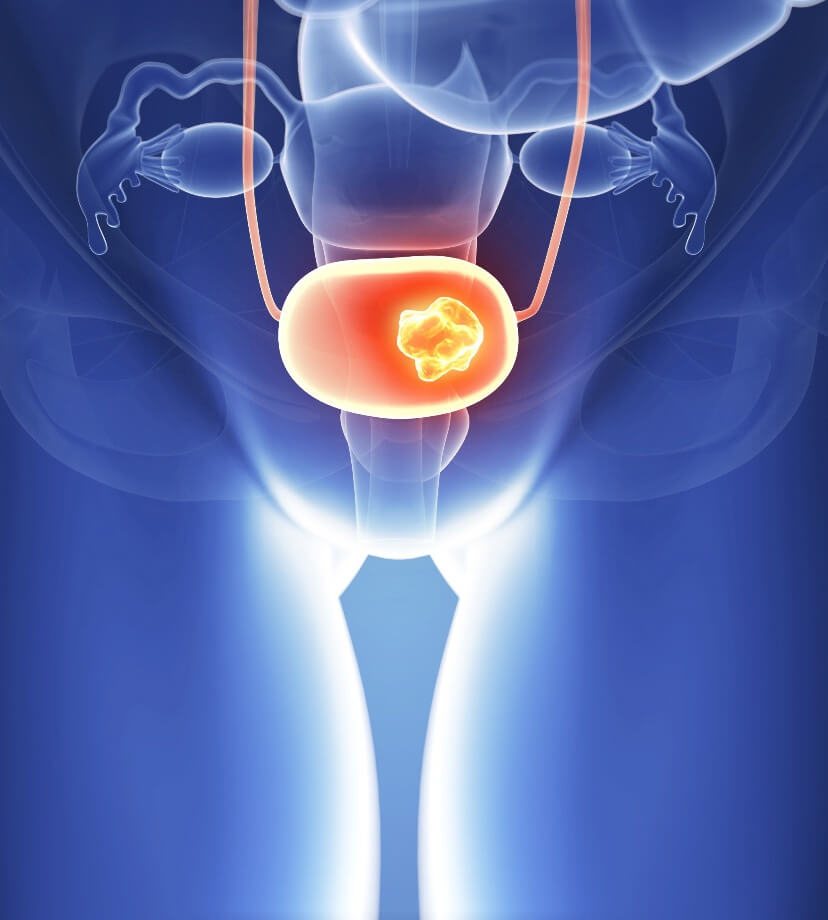Cervical Cancer


Pap testing
Regular pap tests help prevent cervical cancer, learn how this test screens for cells that may develop into cancer over time.
HPV testing
The cause of most cervical cancer? A virus called human papillomavirus (HPV). It can cause normal cells to turn abnormal. Fortunately, there’s a simple test for it.
Biopsy testing
To confirm a cancer diagnosis, a doctor will order and perform a biopsy. Learn more about the process.
Detect potential problems before they become real problems
The Pap test is part of screening for cervical cancer. It looks for abnormal cells on your cervix that could turn into cancer over time. That way, abnormal cells can be found and treated before they ever turn into cancer.
Regular screenings have helped decrease the number of deaths from cervical cancer. Not all women get screened regularly, and it puts them at an unnecessary risk. About half of all cervical cancers occur in women who have never been screened.
What the Pap Test Detects
Doctors order Pap tests to determine if there are any abnormal cells on the cervix that can cause cancer. In order to perform the test, your physician first must collect a small sample of cells from your cervix. The sample is then examined in a laboratory with a microscope for abnormal cell growth or changes, including cervical cancer.
Co-testing PAP + HPV
Co- testing is cervical cancer screening that includes a PAP and an HPV test at the same time.
- The Pap test detects the presence of abnormal cells.
- The HPV tests detects the virus that can cause cervical cancer.
When co-testing, the doctor only needs to collect cells once. Conducting the two tests together on woman ages 30-65 provides better detection of pre-cancer and cancer itself than PAP or HPV alone.
When to get tested
Experts recommend that most women begin regular Pap testing at age 21. If you are between the ages of 30 and 66, experts prefer that you get a Pap test and an HPV test together to provide the best possible protection against cervical cancer. After age 65, you might not need to be screened. Some women should be tested less or more often.
Talk to your doctor about screening. Your sexual history, your age, and the results of your last cervical cancer screening all help determine how often you should be tested.
Next Steps
Schedule an Appointment
Detect the virus that can cause cervical cancer
Cervical cancer is among the most preventable forms of cancer, and screening is an important part of early detection. That’s great news for women ages 21 to 65.
HPV: The cause of most cases of cervical cancer
Cervical cancer develops when cells on the cervix become abnormal then change and become cancerous.
A common virus, the Human Papillomavirus (HPV), is largely responsible for causing normal cells to change and become abnormal.
It can take decades for cervical cancer to develop. That’s why early detection is so important. The early stages of cervical cancer usually do not come with symptoms. It is rare to see or feel symptoms until the HPV virus is advanced. Women with advanced cervical cancer may have abnormal bleeding, discharge, or pain.
The HPV Infection
HPV is spread through sexual activitiy, specifically skin tomucus membrane contact.
The HPV infection is very common in young women, and for most, HPV resolves on its own. That is why testing for HPV is generally not needed before age 30.
But for women ages 21 to 29, when a Pap test results comes back as abnormal, a doctor may decide to test for HPV.
Doctors order the HPV test for women over 30 to determine if they are at a higher risk for cervical cancer. if HPV is present, these women need to be screened more often.
Professional guidelines recommend that women between the ages 30-65 get tested with Pap and HPV together, called co-testing, as studies show that provides the best screening protection for women in this age group.
Detecting HPV
During an office visit, your doctor collects cervical cells with a simple swab of the cervix (just as they do for Pap test). Your cells are then sent to the laboratory to determine if you test positive for the HPV virus.
Regular screenings are the best way to discover problems before they develop into cervical cancer. That way, if abnormal cells are found, they can be monitored, or if necessary, treated before cancer develops.
Treating an HPV Infection
Although there is not treatment for the HPV virus, there are effective treatments for abnormal cervical cells. When HPV is detected, abnormal cervical cells are destroyed or removed. This can help prevent the cells from turning into cancer.
And altthough no treatment is a guarantee, your doctor can recommend regular follow-up screenings to find problems early and treat them before they turn into cervical cancer.
Next Steps
Schedule an Appointment
Cervical Cancer Testing: Biopsy Testing
Biopsy testing is performed to confirm a diagnosis of cervical cancer.
A physician may order the test after a Pap test suggests an abnormal results. A biopsy of tissue from the cervix is collected and forwarded to a laboratory for microscopic analysis.
If a biopsy is normal, meaning no abnormal cells are found, a physician may monitor a woman over time with other Pap tests.
If a biopsy suggests cancer may be present, a physician will remove the cancerous tissue.
For more information about how biopsy testing may help you, please consult your physician. Your health care professional is the best source of information.